Do you want to know if your search engine optimization (SEO) investment is paying off? Wondering how to measure SEO performance in Google Analytics?
Many tools that track SEO rankings can help you measure your efforts, but they can be expensive to use, which is where Google Analytics comes in handy. Although it doesn’t have all of the same features as some of the other tools, it’s free! You just need a little practice to use it to its full potential to track SEO metrics.
In this article, we’ll show you how to measure your site’s performance and track SEO rankings with Google Analytics 4, so you can decide if your strategies are working for your business or if they need to be tweaked.
How to Measure SEO Performance (10 Ways in Google Analytics)
1. Monitor Organic Traffic
The first, simplest way to measure SEO performance with Google Analytics is to monitor your site’s organic traffic. Looking at how many people visit your website from search engines shows how effective your SEO strategies are and how well your digital marketing efforts are paying off.
To view your traffic channels, log in to your Google Analytics account. Then navigate to Reports » Acquisition » Traffic acquisition.
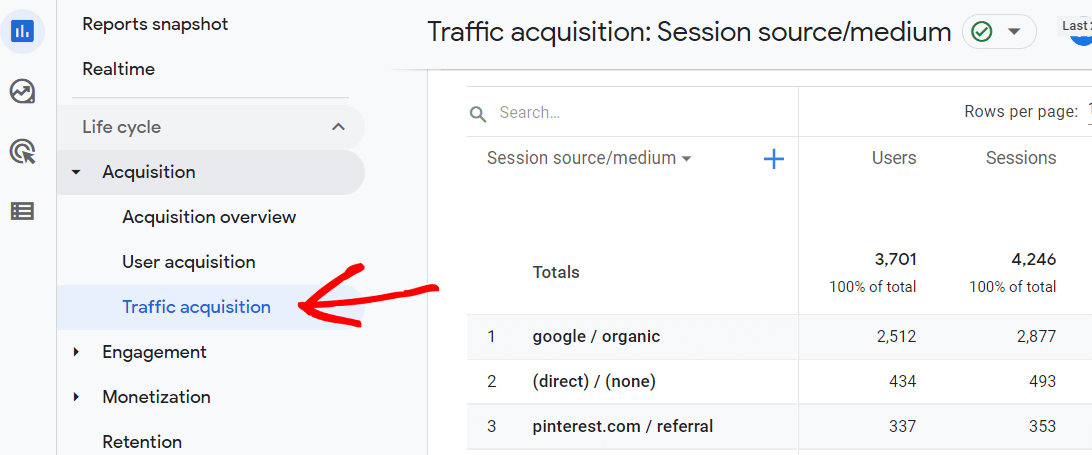
In the report, you’ll see different sources that people use to visit your website. Pay close attention to Organic Search, as that’s the traffic that comes from search engines. Compare traffic from the previous months to see if you’ve gained or lost traffic.
If you see that Organic Search traffic is declining, then it means your SEO strategies might need improvement. A decline in search traffic can also help identify other technical issues like your website not indexing on Google or being too slow.
On the other hand, if your Organic Search traffic is increasing, then your SEO efforts are paying off, and your strategy is more likely on track.
2. Track Keyword Rankings in Google Analytics
When people think about SEO performance, this is probably the first thing that comes to mind. Which keywords are ranking in Google?
Many beginners think you have to pay for an SEO tool with a whole bunch of SEO reports to be able to track your keyword rankings, but you can actually find ranking data in Google Analytics.
How? By connecting Google Search Console with Google Analytics.
It removes the problem of keywords not being provided in Google Analytics reports, and you can see pretty precisely how your search queries are performing.
To get started, connect Search Console and Analytics if you haven’t already. Then, go to Reports » Search Console » Queries. Here, you’ll see the keywords and phrases that were used to find you in Google search results.
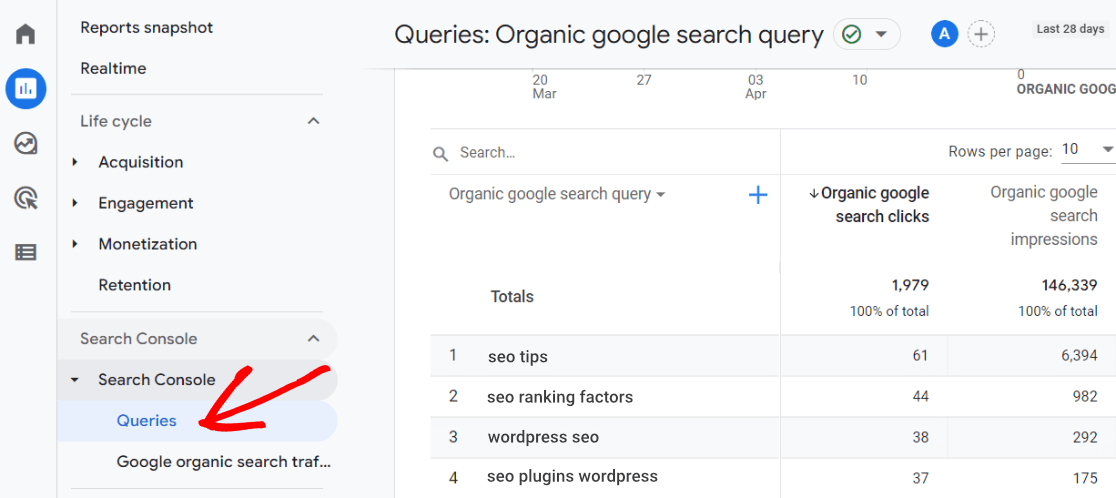
If you’re a WordPress user, you can also track keyword rankings and clicks by using MonsterInsights. It’s the best Google Analytics plugin for WordPress and allows you to set up advanced tracking in just a few clicks.
With the MonsterInsights Search Console report, you see your top 50 Google search terms right inside your WordPress dashboard. You can view how many clicks and impressions it gets for each keyword, click-through rate (CTR), and average position.
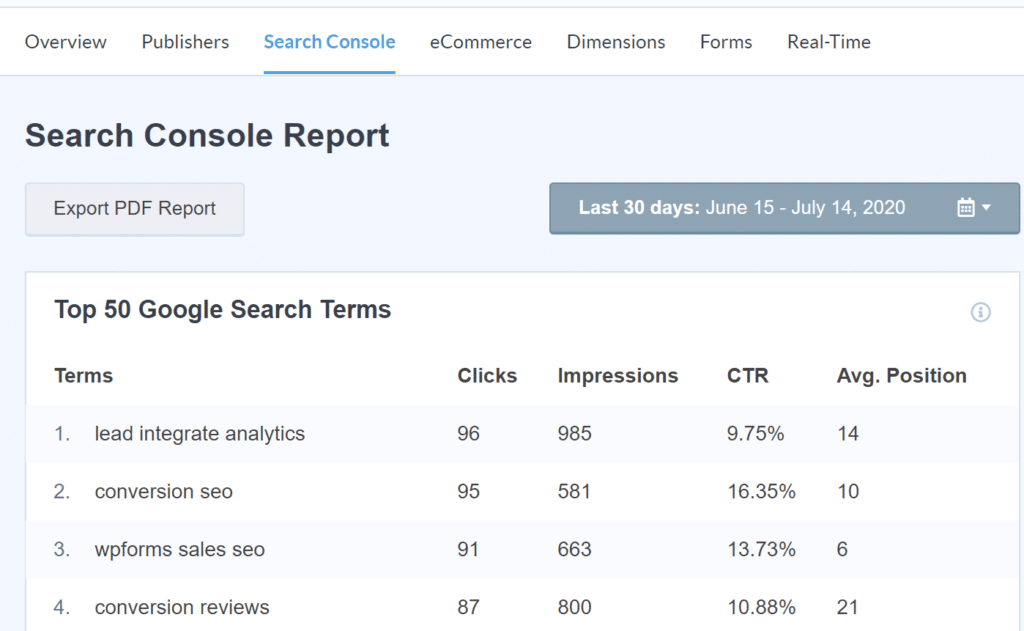
Whether you use Google Analytics or MonsterInsights, the information in this report is extremely valuable. It shows which keywords are driving organic traffic to your website. You can use this data to find similar keywords to optimize your blog posts and pages.
It also helps to identify “low-hanging fruit” opportunities. These are keywords that rank on the second page of search results (positions between 11 – 20) on Google, and with a little effort, they can reach the top 10 and start driving more website traffic.
3. Monitor Traffic from Referral Sources
One of the most important Google SEO ranking factors is backlinks. If you just secured a backlink from a high-traffic website or published a guest post on a great related website and want to know how many visitors came from that link, then you can check the referral traffic sources report.
In Google Analytics, go to Acquisition » Traffic acquisition, then type referral into the search box and hit Enter to see just your referral traffic.
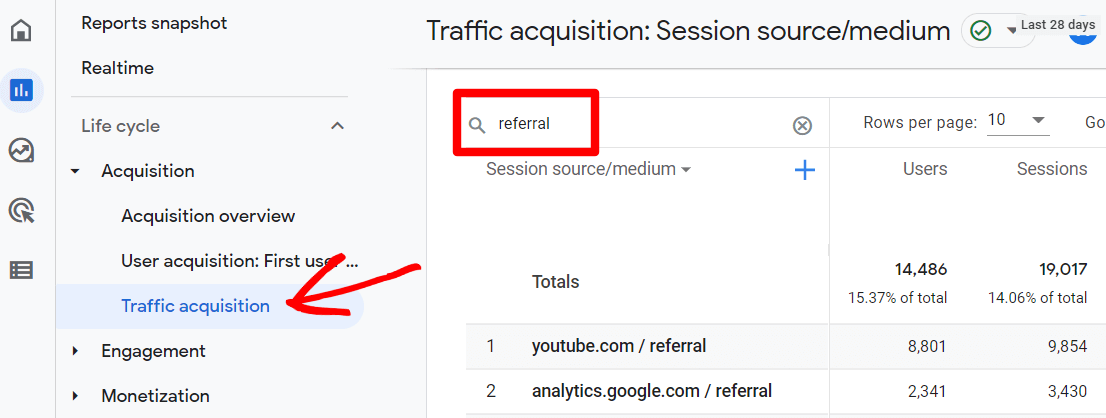
Not only can you use this report to see which referrals are sending the most traffic, but you can also look for opportunities. If a website has linked to you in the past, maybe the owner would be interested in publishing a guest post from you or linking to another of your resources. This is a great tactic to get more backlinks.
If you don’t get much referral traffic, perhaps it’s time to work on building backlinks and social media profiles in an attempt to increase your SEO rankings.
The Referrals report is another one that you can see in MonsterInsights in your WordPress dashboard.
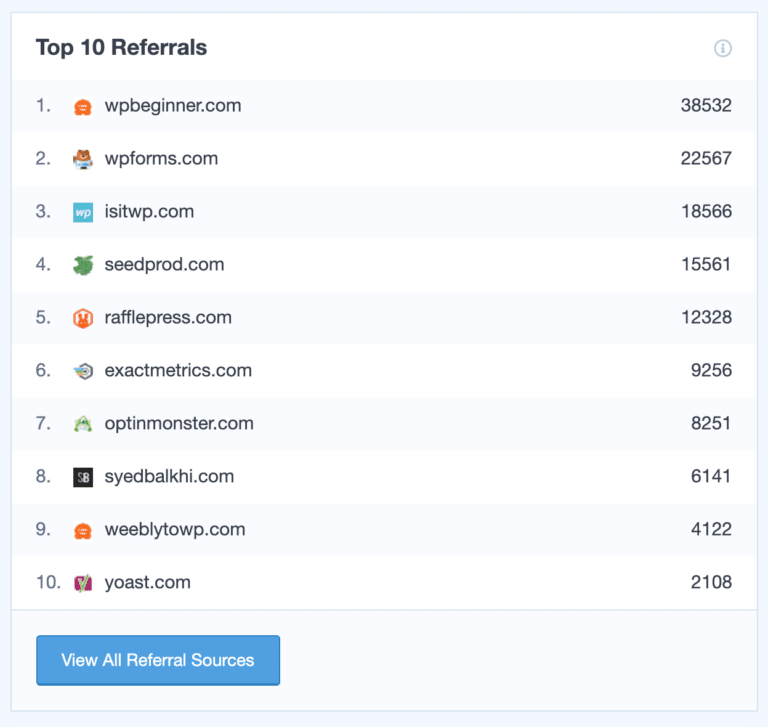
4. Monitor Your Engagement
You’re likely familiar with bounce rate (the percentage of visitors who leave your site without taking an action), and while Google doesn’t take a high bounce rate into account as a negative SEO ranking factor, it does take into account how engaged your website visitors are overall.
To see your engagement rate (the percentage of visitors who are actively engaged with your site) in Google Analytics, go to Acquisition » User acquisition. There you can see your average engagement rate for Organic Search.

When a visitor doesn’t engage with your content and bounces quickly, it’s typically because your page isn’t satisfying their query. If many users leave your web pages quickly upon landing, it can affect your page’s search rankings in the long run.
Note: By default, Google Analytics doesn’t show bounce rates, but you can follow this tutorial to find your bounce rate in Google Analytics.
Check out our guide on how to reduce bounce rate using quick and easy methods.
5. Measure Mobile Friendliness
When it comes to measuring SEO performance, it’s now more important than ever to check your website’s mobile-friendliness.
Google uses mobile-first indexing, which means that it uses your website’s mobile version for indexing and rankings.
You can use Google Analytics data to see how well your site performs for users on different types of mobile devices.
To find the report in Google Analytics, go to User » Tech » Tech details. Scroll down to the table and click the Browser dropdown. In the dropdown, choose Device category.

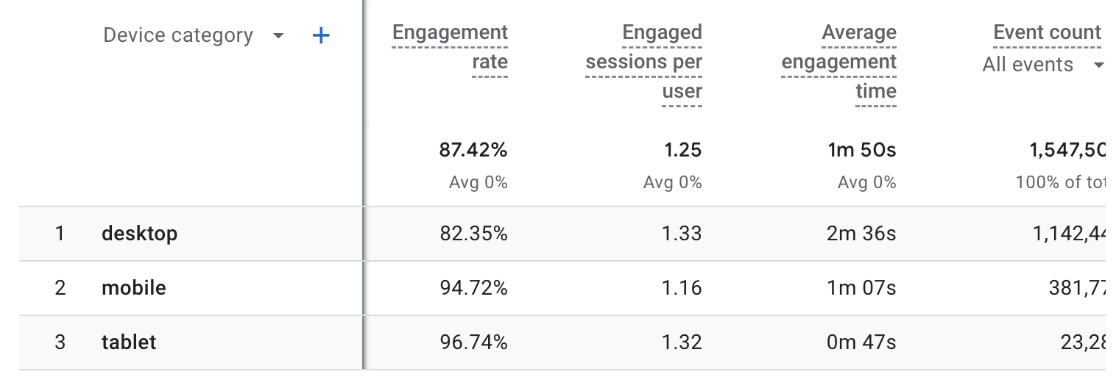
In the screenshot above, you can see that engagement rates are high for mobile and tablet. This shows that your mobile strategy is paying off in keeping visitors engaged.
However, you’d also want to look at conversions and other metrics here to see if there is a weak spot that you can further optimize for mobile visitors.
In MonsterInsights, you can easily see which device people use to visit your website right in your WordPress dashboard.
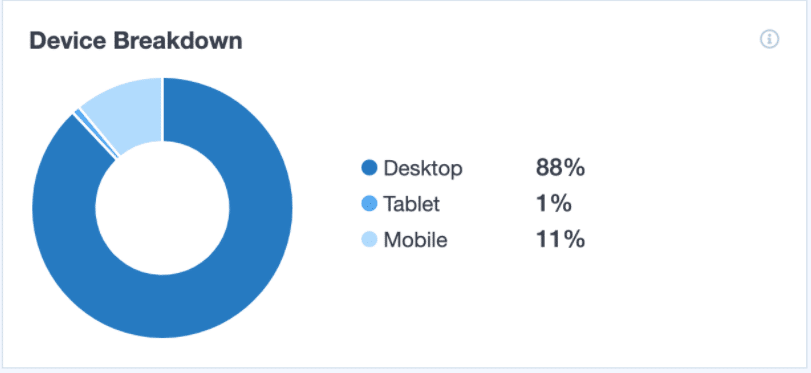
6. Keep Tabs on Site Speed
Next to mobile-friendliness, site speed is another important ranking factor you need to focus on.
Google looks at the user experience of your website to determine if you should be ranked in search results. If your site doesn’t load quickly, then it could harm your SEO campaigns.
Unfortunately, there is no site speed report in Google Analytics, but you can use Google’s PageSpeed Insights tool to get a comprehensive look at how quickly your site is loading and diagnose performance issues.
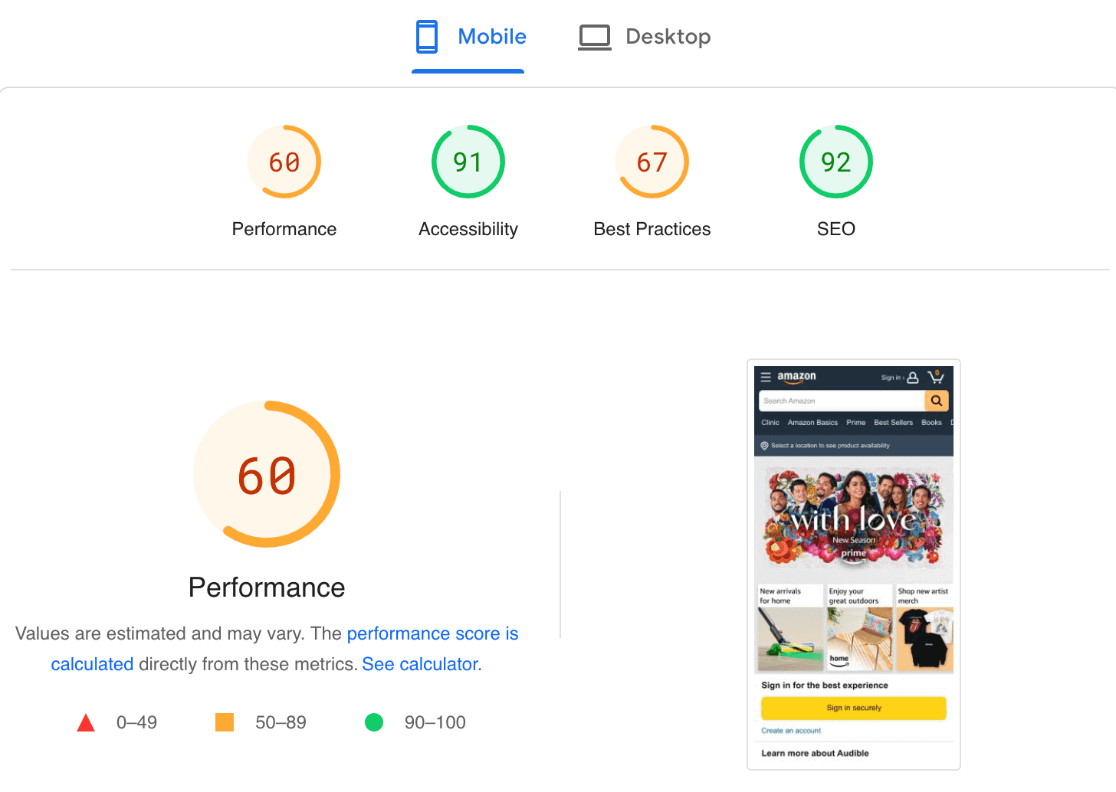
Or, with MonsterInsights, you can view an up-to-the-minute Site Speed report inside your WordPress dashboard at any time. It shows an overall score for mobile and desktop, along with important metrics to help you measure the load times.
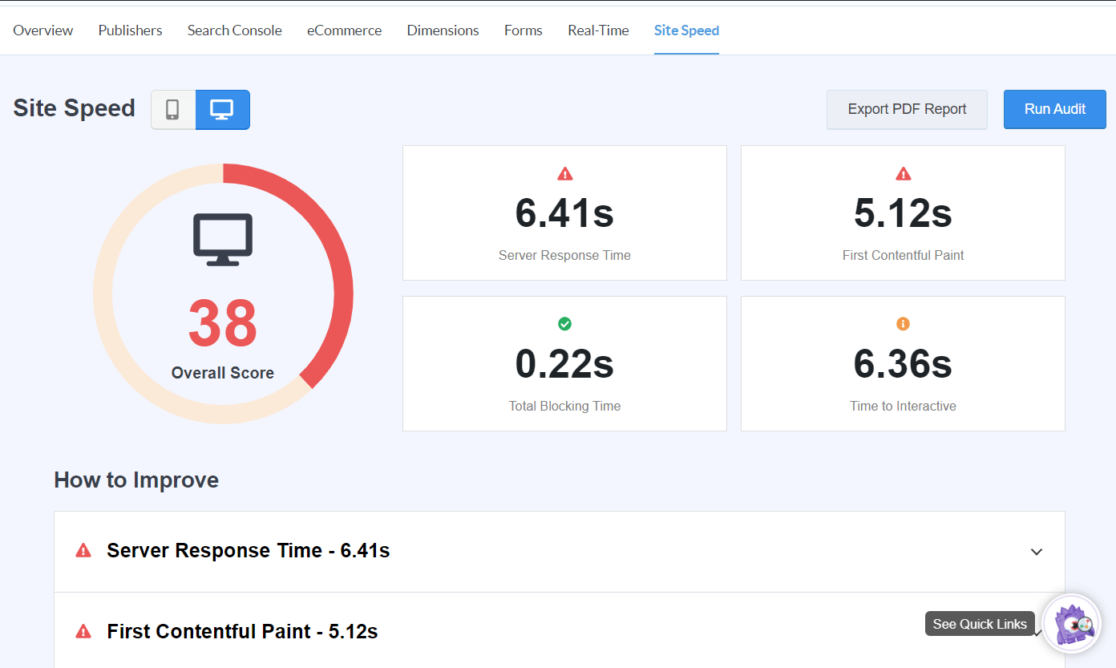
That’s not all. You also get recommendations on how to speed up your website and changes you can make to ensure your visitors get the best user experience.
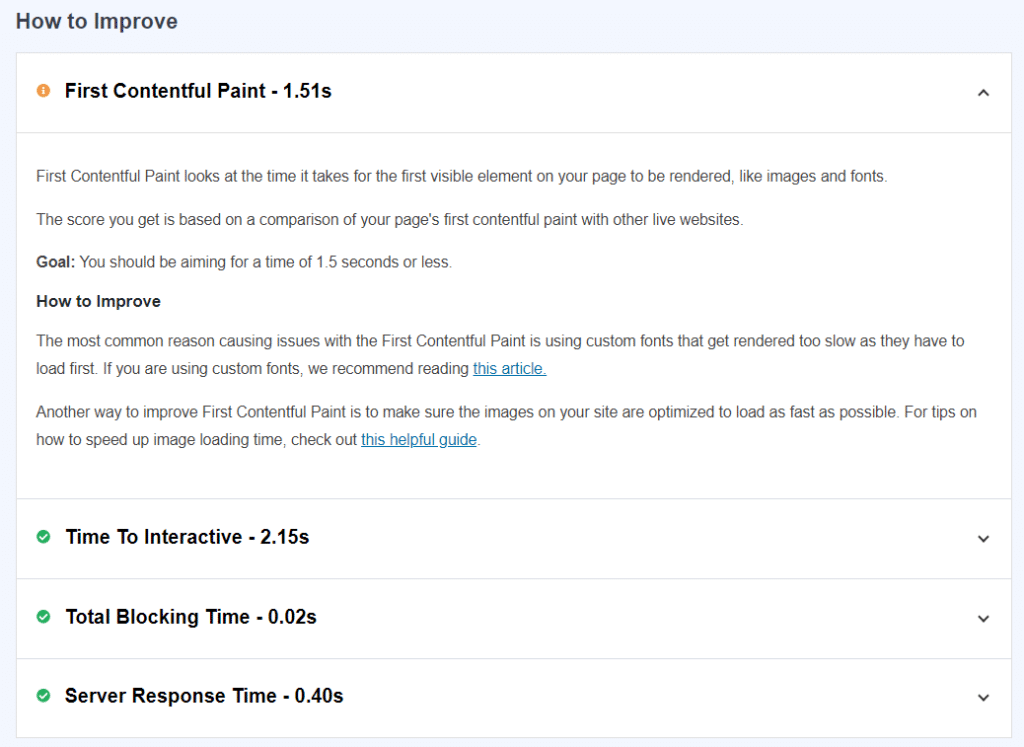
If your site is on WordPress, check out 17 Easy Hacks to Speed Up Your WordPress Site Performance.
7. Track and Fix Broken Links
Broken links are links that no longer exist on your website. Usually, you will see a 404 error shown by a browser when a link is broken. And they can negatively impact your SEO rankings and user experience.
But the good news is that you can automatically track broken links!
Easily track broken links in Google Analytics and quickly fix 404 errors with MonsterInsights. Simply set up the plugin on your website and it will track your 404 errors in Google Analytics.
Another option is All in One SEO (AIOSEO)’s Broken Link Checker. This simple plugin regularly checks your site content to find broken links and helps you fix them easily to keep search engines and users happy.
It checks for both internal and external broken links, alerts you of problems, and stops Google from indexing broken links until they’re fixed. Plus, you can use inline editing to fix bad links, which saves a ton of time!
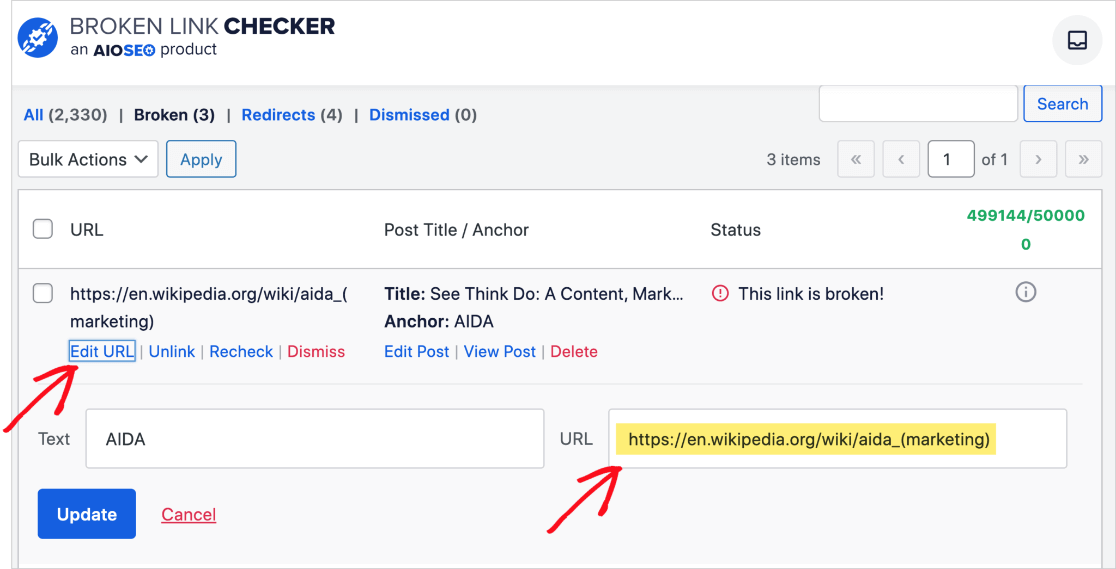
8. Track Page-Specific SEO Performance
Tracking the SEO performance of your organic landing pages at a per-page level will help you understand a few different things about your traffic and your content. Here are a few of the biggest conclusions you can draw from the pages report:
- Which landing pages are resulting in conversions and have the highest conversion rate
- Which landing pages do visitors spend the longest time reading/interacting with
- Which landing pages have the most visibility/best rankings in search results
- Which landing pages are really low on the list, meaning they might need some more SEO work to rank
To find site traffic sources for a specific page in Google Analytics, navigate to Engagement » Pages and Screens. In the table, you’ll see both Views and Users, so you can see how many views each page got, and how many users make up those views.
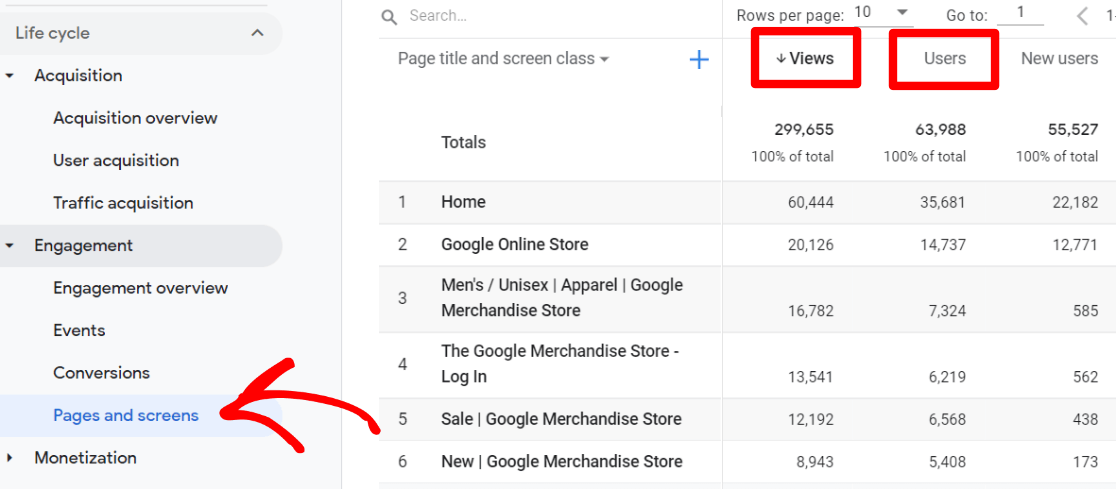
To add source/medium to the report, click the + icon above the Totals column. In the dropdown menu, choose Traffic source then Session source / medium.
Now, you have a table of your pages by source/medium and views:
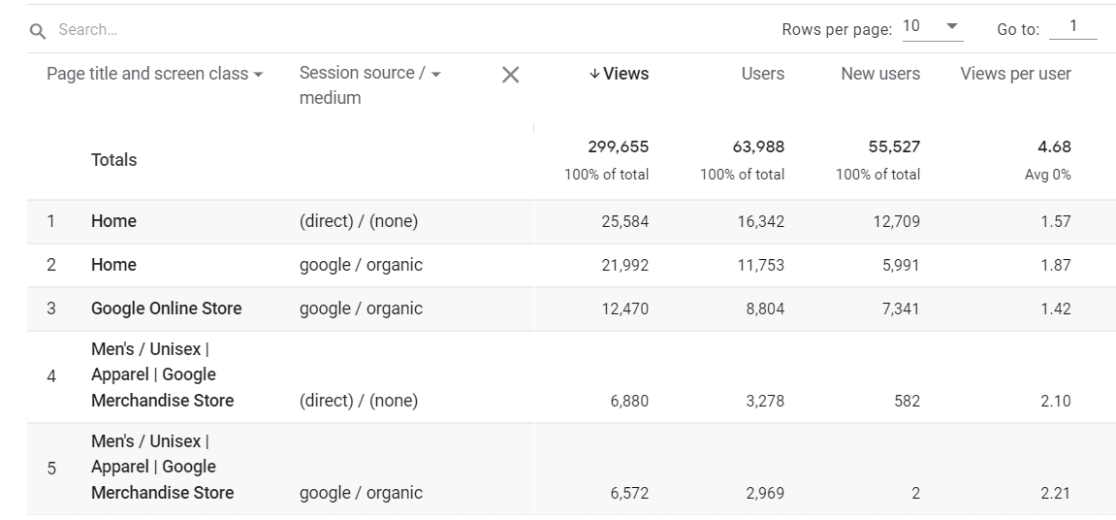
To change this table to see your landing page views by source/medium, scroll over the Event count column. Click the down arrow next to All Events and select first_visit.
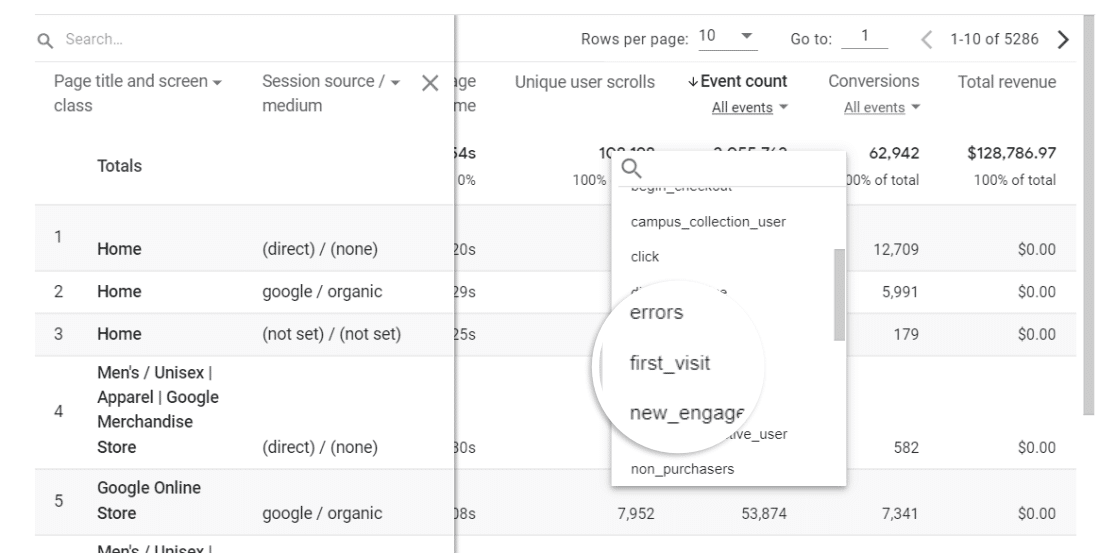
Then, click the Event count column title to sort by landing page visit events. Now you have your landing page visits report by source/medium.
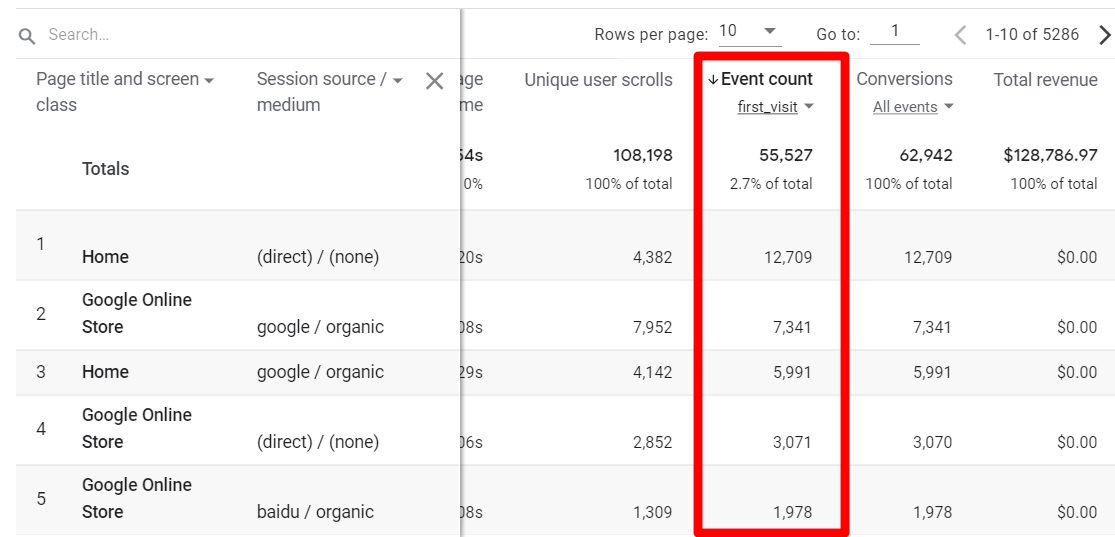
9. Track Your Focus Keyphrase
Are you using WordPress and MonsterInsights? If so, and you also have All in One SEO or Yoast installed for optimizing your content, then you can track your focus keyphrases.
A focus keyphrase is the search term you want to target on your blog post or landing page. It can be a single word or a phrase that you want to rank for on Google.
With the MonsterInsights Dimensions addon, you can see which focus keyphrases bring in the most traffic:
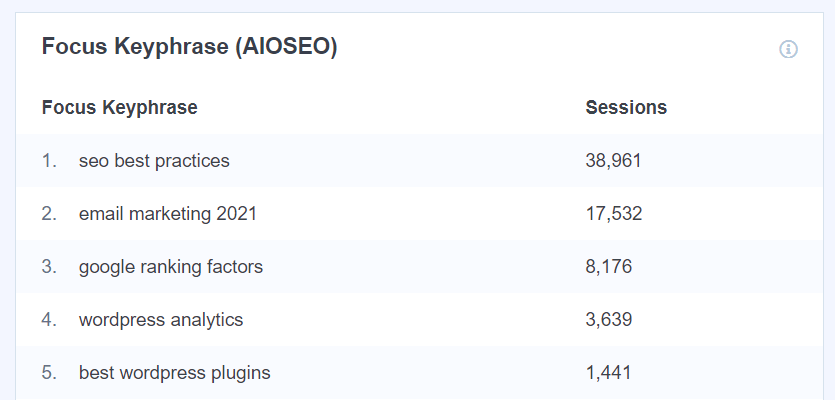
Custom dimensions allow you to track additional information that Google Analytics doesn’t track by default. It helps you get more insights into how your SEO is performing.
10. Set Up Custom Insights for Changes in Traffic
Monitoring organic traffic daily (or even a couple times a week) in Google Analytics can be difficult if you’re busy with other tasks.
A simple way to make sure you’re on top of things is with Google Analytics Insights, which are custom alerts that can tell you when there is a significant change in your organic traffic.
For instance, if your site gets impacted by a new algorithm update, an alert will notify you about it so that you can take work on reversing the action as early as possible.
Basically, creating an alert ensures that you don’t miss any urgent changes in your analytics.
Google Analytics includes automatic insights that you can find by scrolling down on your account home page. Here you’ll see important updates about your site.
If your site is new, you may not have any yet. Instead, you’ll see a section that says See Suggested Insights. Click this or if you do have insights, click View all insights in the top right.
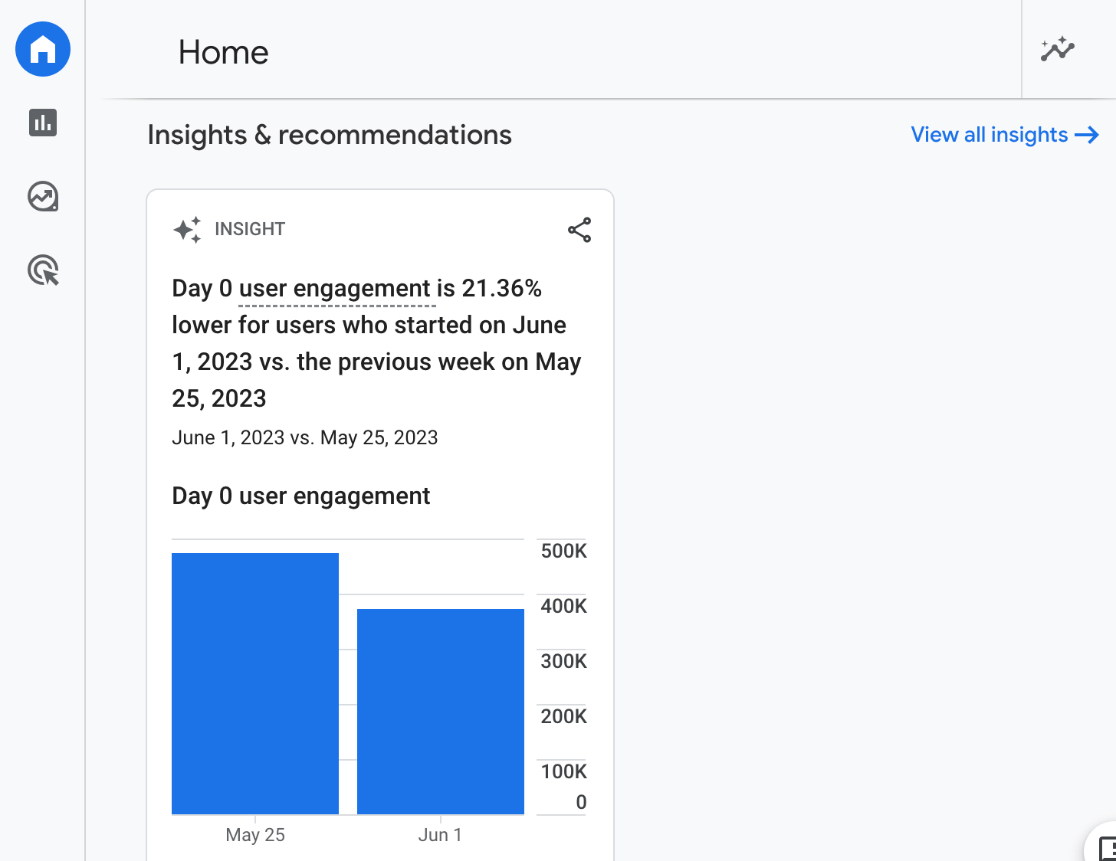
From there, you can click Manage Insights in the top right. You’ll see suggested Insights that you can review, set up notifications for, or create your own Insights to be alerted about.
That’s it!
We hope you liked our article on how to track SEO data with Google Analytics in WordPress. You may also want to look at our list of best SEO plugins and how to track user engagement in WordPress using Google Analytics.
Want to know more about SEO? Check out our Blog Post SEO Checklist: How to Write & Optimize Blog Posts.
Not using MonsterInsights yet? What are you waiting for?
And don’t forget to follow us on Twitter, Facebook, and YouTube for more helpful Google Analytics tips.
